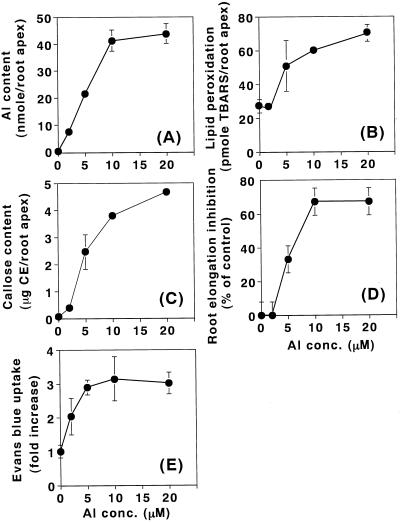Figure 3.
Aluminum dose dependency of lipid peroxidation and other events caused by aluminum in pea roots. Pea seedlings were treated with aluminum at concentrations of 0, 2, 5, 10, and 20 μm in 100 μm CaCl2 (pH 4.75) for 24 h. After the treatment, a 10-mm section of the root apex (from the tip [0 mm] toward basal region [10 mm]) was analyzed for aluminum content (A), lipid peroxidation (B), callose content (C), root elongation inhibition (D), and the loss of plasma membrane integrity (E), as described in “Materials and Methods.” Root elongation inhibition (percentage of control) was calculated as [(A − B)/A] × 100, where A was the root length elongated during treatment without aluminum, and B was the root length elongated during treatment with aluminum. All data show the means ± se of a total of three independent replicates from two independent experiments, each replicate comprising four 10-mm root apices (A–C, and E), or six roots (D).

